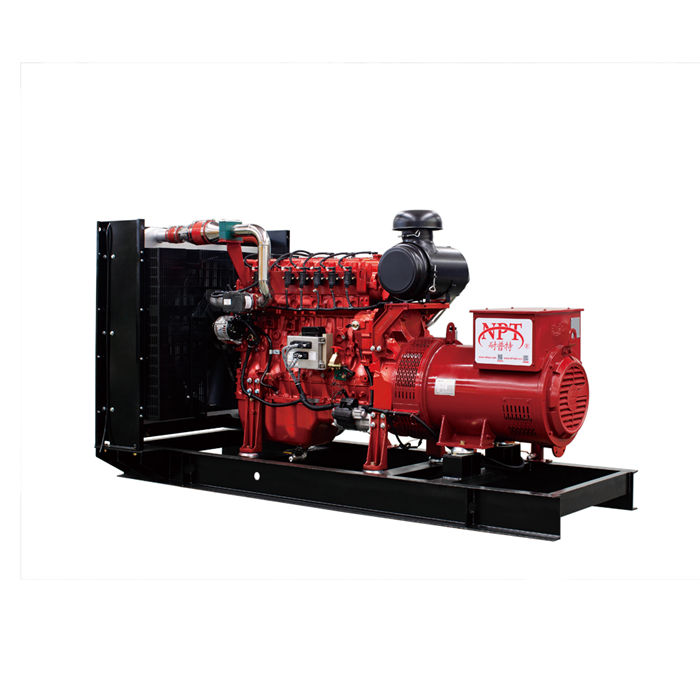Biogas fermentation, also known as anaerobic fermentation, refers to the formation of methane and carbon dioxide through the catabolism of various microorganisms under certain moisture, temperature and anaerobic conditions of organic matter (such as human, livestock and poultry manure, straw, weeds, etc.) The process of flammable mixed gas (biogas).
What are the commonly used biogas fermentation raw materials in rural areas?
There are many raw materials that can be used for biogas fermentation in rural areas. Commonly used are human and livestock (pigs, cattle, sheep, chickens, ducks, geese, etc.) manure, various crop stalks (straw, wheat straw, corn stalks), and green weeds. , Rotten vegetable leaves, water hyacinth, organic waste residue, waste water (waste water from distiller’s grains, tofu residue water, slaughterhouse waste water), etc. are all good raw materials for biogas fermentation.
Which fermentation raw materials can be selected to make the biogas digester produce fast and good gas?
Biogas fermentation raw materials are the material basis for the production of biogas. During biogas fermentation, various microorganisms absorb nutrients such as water, carbon sources, nitrogen sources, inorganic salts and certain elements from the fermentation raw materials.
In order to ensure that there are sufficient and stable fermentation raw materials for the start-up and fermentation of biogas generators for livestock breeding, it is necessary to select cow dung, pig dung, and sheep dung with suitable organic nutrition as the start-up fermentation raw materials before feeding. Because these manure raw materials have finer particles, contain more low-molecular compounds, and have high nitrogen content, their carbon and nitrogen ratios are less than 25:1, which are all within the suitable fermentation carbon and nitrogen ratio, so the above manure is selected for fermentation The raw material starts quickly and the gas production is good. Don’t start with chicken manure, human manure and sweet potato residue alone, because these kinds of raw materials are easy to acidify when there are few biogas bacteria, so that fermentation can not proceed normally.
How to start a newly fed biogas digester?
The process from the feeding of the newly fed biogas digester to the normal and stable natural gas production is called the start of biogas fermentation. The smooth start of the digester fermentation is very important for the long-term stable operation. The start-up procedure is generally: (1) Add inoculum and fermentation raw materials according to the required ratio; (2) Add water above 20℃; (3) Use pH test paper to measure the pH before closing the movable cover; (4) Close the movable cover; (5) Vent and test the fire.
What problems should be paid attention to when starting a biogas digester?
The following issues should be paid attention to when starting a biogas generator set for livestock breeding that does not leak water and gas:
1. There must be a sufficient amount of inoculum. Before loading the new tank, collect the biogas residue, biogas slurry, black sediment from the bottom of the manure pit, pond mud, sewage sludge from urban sewage ditches, and sewage and sludge from food factories, wineries, and slaughterhouses in old biogas tanks. , Which are rich in biogas bacteria, are good inoculants. Collect the quantity of one of the above inoculums to reach 10-30% of the fermentation raw materials, mix the inoculum and fermentation raw materials uniformly, and add them to the tank together. Add water to seal the pool in time. The water added to the biogas digester can be selected from biogas fermentation broth, domestic wastewater, river water or pond water, etc., or well water, but tap water should not be used as much as possible, and industrial wastewater containing toxic substances should not be used.
2. Suitable temperature. In the range of 10-60℃, biogas can be fermented normally to produce gas. In this temperature range, the higher the temperature, the higher the gas production. Therefore, it is advisable to start the biogas digester between April and October.
3. Proper pH (pH value). The growth and reproduction of biogas microorganisms requires the pH of the fermentation raw materials to be neutral or slightly alkaline (ie, pH=6.5-7.5). Overacid and overalkali will affect gas production.
4. Appropriate load. The load of rural biogas digesters is usually expressed by the concentration of fermentation raw materials, and the suitable dry matter concentration is 6-12%. If the concentration is too high, the fermentation raw materials are not easy to decompose, and it is easy to accumulate a large amount of acidic substances, which will affect the normal gas production; if the concentration is too low, the organic content per unit volume will be relatively reduced, and the gas production will also be reduced. Biogas generators for animal husbandry should be started at a low load (with a concentration of less than 6%). After the gas production is normal, the load will be gradually increased until the designed rated operating load.
5. Control of adding water. The biogas digester is started, and the amount of water added to the digester is relatively large, accounting for about 5/8 of the effective volume of the biogas digester. Therefore, the start-up water temperature has a great influence on the smooth start-up of the biogas digester. Generally, the starting water temperature should be controlled above 20°C. If the biogas digester is to be started in autumn and winter, the starting water temperature added to the pond should generally be controlled above 35°C.
6. Cover. Lime mortar should be used to seal the movable cover, not too hard or too soft, and it must be able to fill the gap between the movable cover and the skylight. The water storage ring on the movable cover should be filled with water frequently to prevent the sealing glue from drying out and leaking.
Post time: Aug-28-2021

